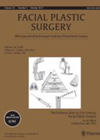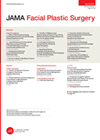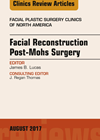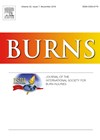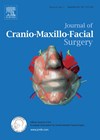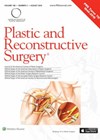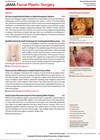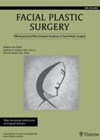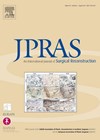
Journal Reviews
Enzymatic debridement of deeply burned faces
This is an interesting study looking at the outcomes following enzymatic debridement of deep facial burns. The authors directly compare enzymatic debridement with NexoBrid® and traditional excisional debridement in deep facial burns. They specifically analyse the debridement efficacy, acute healing...
The double-half bilobed flap or traditional bilobed flap – which is better?
Reconstruction of the nasal tip following ablative surgery can be taxing. The nasal tip is a very visible area with largely immovable skin and reconstruction needs an appreciation of the various sub-units to achieve best results. The traditional superiorly based...
Association of skin thickness with alar base reduction
The authors present the findings of a retrospective study including 621 patients who had septorhinoplasty using lateral crural repositioning (LCrep) with lateral crural strut grafting (LCSG) and with or without alar base resection. Study participants’ skin types were determined intraoperatively...
Reconstructing post-resective auricular defects
The auricle is split into six specific anatomic subunits that vary in skin thickness, contour, structural integrity and the availability of healthy surrounding tissues. It is important to reconstruct an aesthetically pleasing auricle as slight deformities may be prominent. The...
A review of reconstruction of the burned ear
The exposed location of the ear, combined with its thin skin and subcutaneous tissue makes it prone to full thickness burn injuries. As a result, deformity and disfigurement of the ear is a common sequelae of burns. This is a...
Longevity of lip augmentation with SMAS
Lip augmentation is an extremely popular cosmetic procedure. Various surgical techniques have been described. However, only a few studies have specifically addressed lip augmentation with superficial musculoaponeurotic system (SMAS). Postoperative analysis never extended beyond one year so far. The authors...
Reconstruction with scapular tip following hemi-maxillectomy and rehabilitation with dental implants
Post ablative defects in the maxilla can be extremely complex, involve all three dimensions and result in significant morbidity. Rehabilitation is fraught with difficulties, and a number of options are available, such as an obturator or surgical reconstruction with a...
Reconstructing the keystone area
This manuscript describes two different ways to stabilise the keystone area during extracorporeal septoplasty. The authors performed a retrospective study on 110 patients who were operated for extracorporeal septoplasty by multiple surgeons. The patients were divided into two groups; in...
Septal perforation repair and rhinoplasty
The authors present the findings of a retrospective study included 17 patients who underwent rhinoplasty with concurrent septal perforation repair. They analysed the aetiology of the deformity, presenting symptoms, perforation size, intraoperative surgical techniques and complications. They evaluated postoperative subjective...
All about velopharyngeal dysfunction
The velopharynx functionally separates the oral from the nasal cavities. Inadequate or abnormal function of this muscular valve affects speech and swallow. Velopharyngeal dysfunction can be subdivided into insufficiency, incompetence and mislearning. This is a review paper and indeed a...
Submental island flap to reconstruct the lower lip
The lips are necessary for oral competence, cosmesis, speech and feeding. Non melanoma cancers can affect the lips, and the lower lips are about 80% more likely to be affected. A large number of these cancers are squamous cell carcinomas....
Exploration of more effective neurorrhaphy in facial nerve reconstruction
This study was laboratory based and focused on different types of end-to-side neurorraphy, and their effects on treating partial facial paralysis. The ultimate aim of this study was to determine which end-to-side neurorraphy produced the greatest axonal growth across the...


